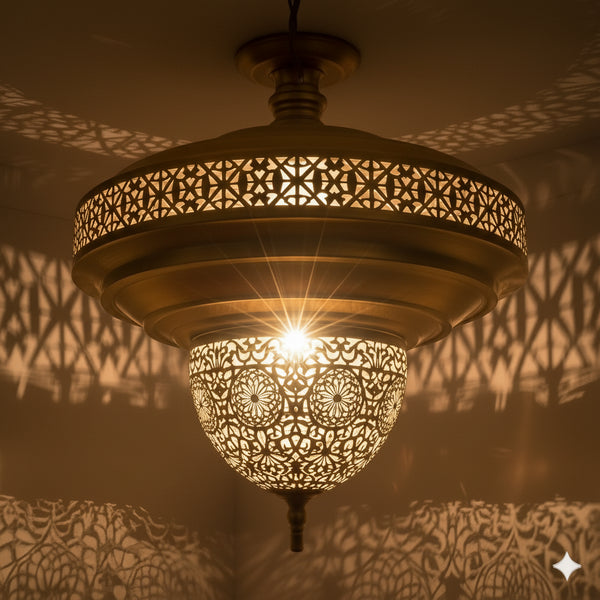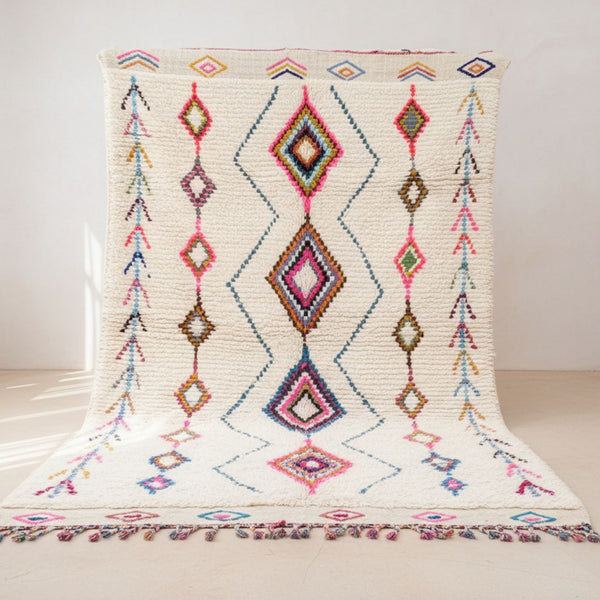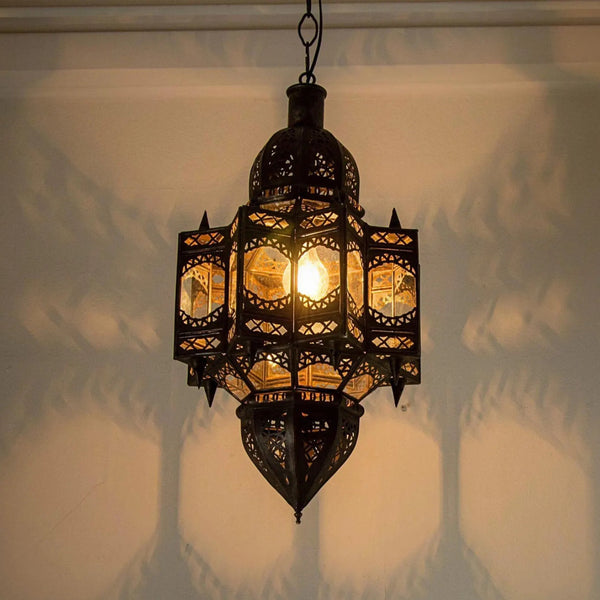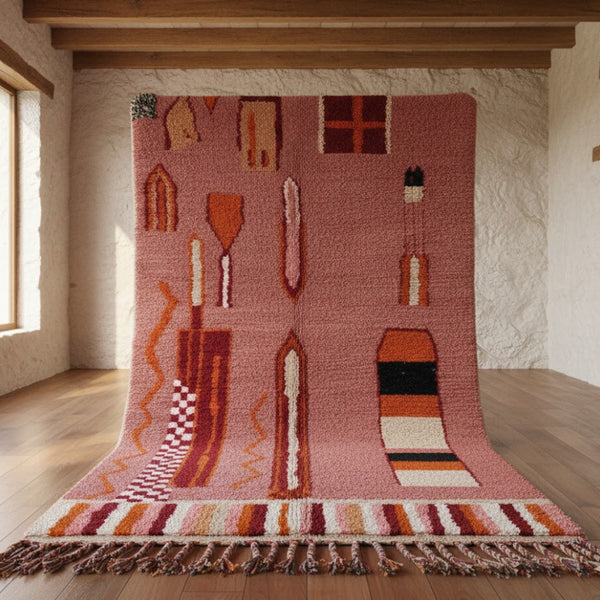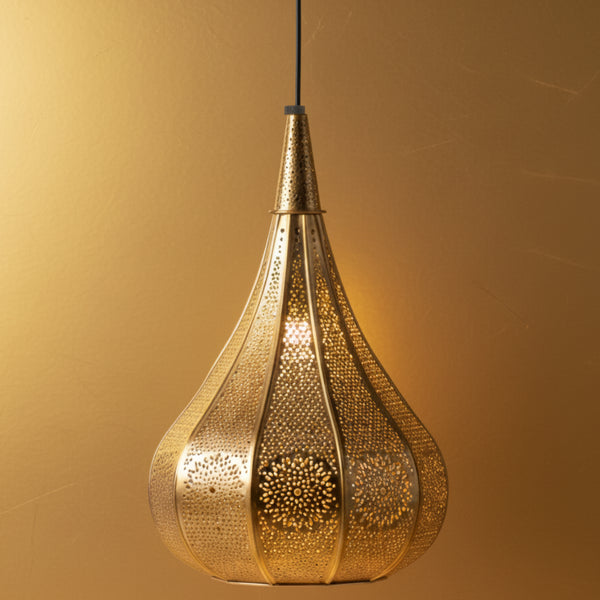Moroccan Lamps: Blend of Function and Art
Posted by ADIL ROUAY
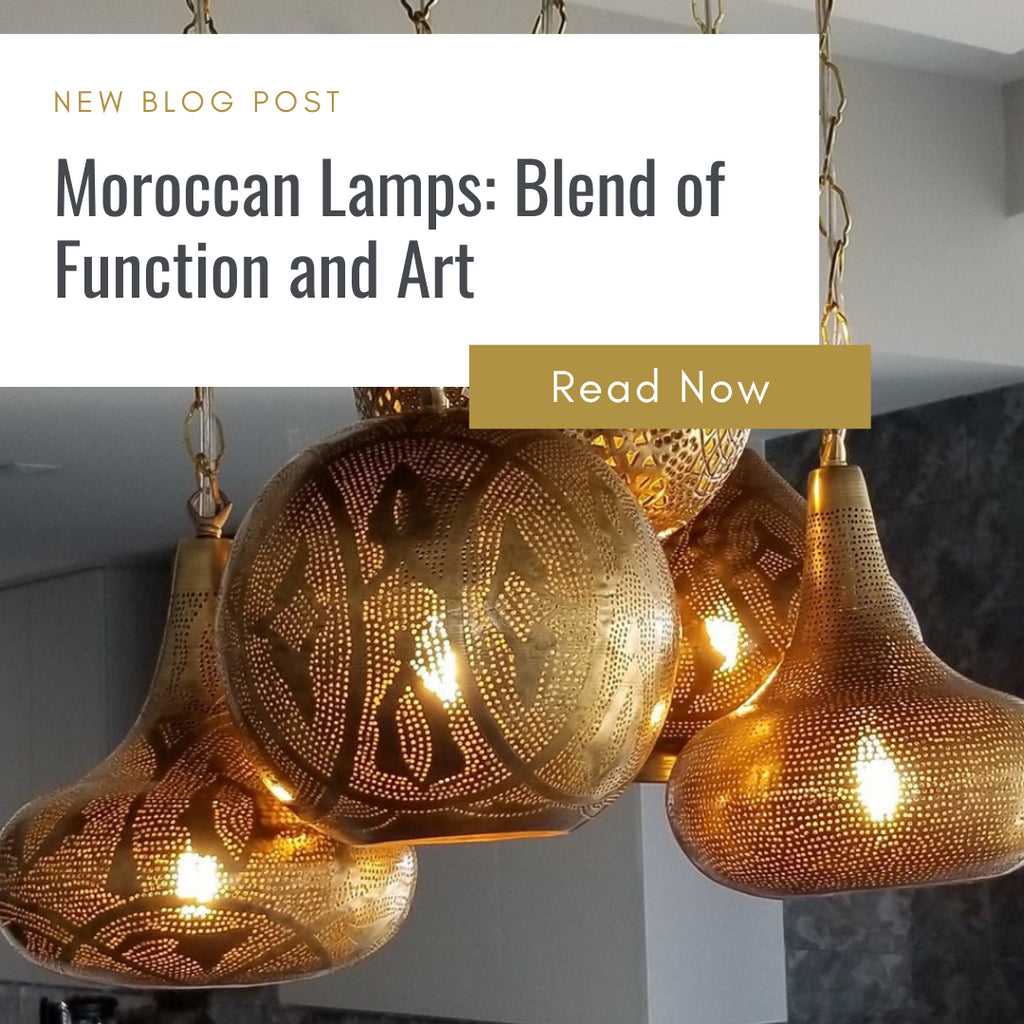
The Rich History of Moroccan Lamps
Moroccan lamps trace their roots back to the Islamic Golden Age, a period of cultural, economic, and scientific flourishing in the Islamic world. These lamps weren't just about lighting up rooms – they were a canvas for artistic expression. Craftsmen poured their hearts and souls into creating intricate patterns and designs, often inspired by Islamic geometry and calligraphy. Over time, Moroccan lamps evolved, incorporating influences from various cultures and artistic movements. Today, they're a testament to Morocco's rich cultural heritage and artistic prowess.The Artistry Behind Moroccan Lamps
What sets Moroccan lamps apart is the sheer craftsmanship that goes into making each piece. These aren't mass-produced items churned out by machines – they're handcrafted works of art. Skilled artisans spend hours meticulously cutting, shaping, and assembling materials like brass, copper, and glass. The result? Lamps that are as unique as they are beautiful. Take this stunning Moroccan brass chandelier, for example. The intricate patterns and delicate metalwork showcase the incredible skill and attention to detail that goes into each lamp.
Take this stunning Moroccan brass chandelier, for example. The intricate patterns and delicate metalwork showcase the incredible skill and attention to detail that goes into each lamp.
The Magic of Moroccan Light
It's not just about how Moroccan lamps look – it's about the atmosphere they create. When lit, these lamps cast mesmerizing patterns of light and shadow on walls and ceilings. It's like having your own personal light show, transforming any room into a cozy, exotic retreat. The warm, amber glow of Moroccan lamps creates an ambiance that's hard to replicate with other lighting fixtures. It's perfect for creating a relaxing atmosphere in living rooms, bedrooms, or even outdoor spaces.Incorporating Moroccan Lamps into Your Decor
The beauty of Moroccan lamps is their versatility. They can work in almost any interior style, from traditional to modern. Here are some tips for incorporating Moroccan lamps into your decor: • Use them as a statement piece in a neutral room • Mix and match different styles and sizes for an eclectic look • Pair them with other Moroccan-inspired decor for a cohesive theme • Use them to add a touch of warmth and exoticism to minimalist spaces Looking for inspiration? Check out this luminous lighting collection featuring a variety of Moroccan lamps and other stunning lighting options.
Looking for inspiration? Check out this luminous lighting collection featuring a variety of Moroccan lamps and other stunning lighting options.
The Functionality of Moroccan Lamps
While Moroccan lamps are undoubtedly beautiful, they're also highly functional. They come in various forms – from table lamps and floor lamps to pendant lights and chandeliers. This means you can find a Moroccan lamp to suit any lighting need in your home. Many modern Moroccan lamps are designed to work with energy-efficient LED bulbs, combining traditional aesthetics with contemporary functionality. Some lamps even come with dimmer switches, allowing you to adjust the light intensity to create the perfect ambiance.Caring for Your Moroccan Lamp
To keep your Moroccan lamp looking its best, follow these simple care tips: • Dust regularly with a soft, dry cloth • For deeper cleaning, use a mild soap solution and avoid harsh chemicals • Be gentle when handling to prevent damage to delicate metalwork • If your lamp has glass elements, clean them carefully to maintain their clarity With proper care, your Moroccan lamp can be a treasured piece in your home for years to come.The Cultural Significance of Moroccan Lamps
Moroccan lamps aren't just decorative items – they're carriers of cultural heritage. Each lamp tells a story of Moroccan craftsmanship and artistic tradition. By bringing a Moroccan lamp into your home, you're not just adding a beautiful object – you're embracing a piece of Moroccan culture. These lamps serve as a reminder of the rich artistic traditions that continue to thrive in Morocco and other parts of the Islamic world. They're a testament to the enduring appeal of handcrafted, artisanal products in our increasingly mass-produced world.The Future of Moroccan Lamps
As interior design trends continue to evolve, Moroccan lamps remain a popular choice. Designers are finding new ways to incorporate these traditional pieces into contemporary spaces. We're seeing exciting fusions of Moroccan design with other styles, creating unique, hybrid aesthetics. There's also a growing interest in sustainable and ethically produced home decor, which bodes well for traditional crafts like Moroccan lamp making. As consumers become more conscious of the origins of their home decor, the value of handcrafted Moroccan lamps is likely to increase.Frequently Asked Questions
What materials are Moroccan lamps typically made from?
Moroccan lamps are often crafted from materials like brass, copper, and glass. Some lamps also incorporate elements like colorful glass beads or natural materials like goatskin for a more rustic look.
Can Moroccan lamps work in modern interiors?
Absolutely! Moroccan lamps can add a unique touch to modern interiors. Their intricate designs and warm glow can create an interesting contrast with sleek, contemporary furnishings.
How do I choose the right size Moroccan lamp for my space?
Consider the size of your room and the purpose of the lamp. For ambient lighting, larger pendant lamps or chandeliers work well in living rooms or entryways. For more focused lighting, smaller table lamps are perfect for bedside tables or reading nooks.
Are Moroccan lamps energy-efficient?
Many modern Moroccan lamps are designed to work with energy-efficient LED bulbs, combining traditional aesthetics with contemporary functionality. Always check the lamp's specifications to ensure it's compatible with the type of bulb you want to use.
Moroccan lamps truly are a perfect blend of function and art. They light up our spaces while also serving as stunning decorative pieces that carry centuries of cultural heritage. Whether you're looking to add a touch of exotic charm to your home or create a cozy, ambient atmosphere, a Moroccan lamp could be just what you need. For those interested in learning more about the artistic and cultural significance of decorative objects like Moroccan lamps, the Getty Research Institute's guide on cataloging cultural objects provides fascinating insights into how museums and cultural institutions document and preserve these treasures.
